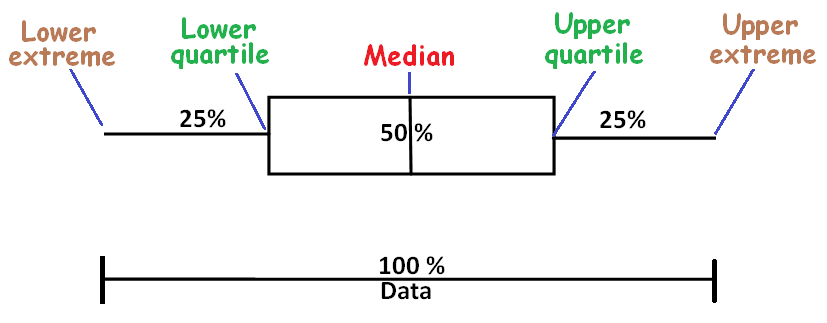

The other two values to remember are the lower quartile (LQ), which divides the lower 50% of the data points into two equally sized parts, and the upper quartile (UQ), that separates the higher 50% of the data points into two equally sized groups.

The median divides the data into two equally sized parts with 50% of the data points on each side. The lowest and the highest values are our lower and upper extreme values. There are five important values to remember if you want to divide your data into quartiles. The quartiles separate the data into four equally sized parts. When we are working with a larger set of data it is much easier to separate the data into quartiles. The bigger the range the bigger is the measure of variation.

When we calculate the measure of variation we first calculate the difference between the greatest and the lowest values.
#Box and whisker plot quartiles series
if we have the two number series A (10, 23, 50, 72, 90) and B (48, 49, 50, 51, 52) we can see that they both have the same median, but that there is a huge difference in variation. We then need to use the measure of variation e.g. We have already learned about the median, the mode and the mean but sometimes these don't fully describe a set of data. On the left hand side of the line we write the numbers that corresponds to the tens, 12 has 1 in the tens place and 33 has 3 in the tens place. We begin by finding the lowest and the greatest number in the data set. This could for instance be the results from a math test taken by a group of students at the Mathplanet School.ġ3, 24, 22, 15, 33, 32, 12, 31, 26, 28, 14, 19, 20, 22, 31, 15 To set up a stem-and-leaf plot we follow some simple steps.įirst we have a set of data. A stem-and-leaf plot is used to visualize data. One way to measure and display data is to use a stem-and-leaf plot.


 0 kommentar(er)
0 kommentar(er)
